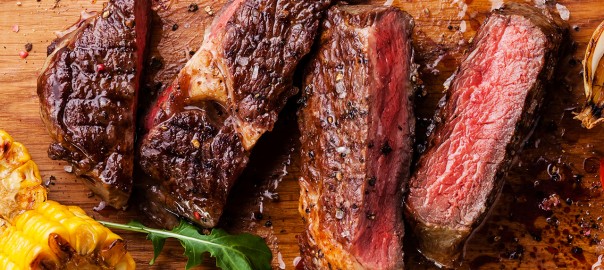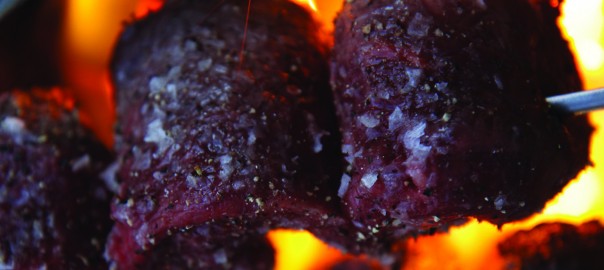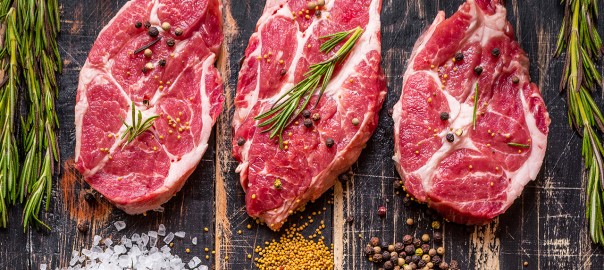The term “grass-fed,” as it applies to beef, has been in use for quite a while. For most, it elicits the idea of an idyllic cow on the range eating natural grass. It is an image that has been connected to the beef purveyors and ranchers well before the current era of grass-fed being a term of differentiation between pasture-raised cattle and those coming out of the U.S. factory farming system in which the animals are fed grains, corn, and other foods not natural to their diet.
And while grass-fed beef has arisen as a healthier, leaner, and more humane alternative to the standard beef you can find at the grocery store, there is not really a clear understanding — or regulatory oversight — as to what exactly qualifies as 100 percent grass-fed beef.
Which is why beef that is “grass-finished” importantly comes into play.
We’ve written before about some of the misleading marketing that occurs in the beef industry with the mislabelling of beef as grass-fed, even when it may have been “grain-finished” in a factory-farm.
To us, the only real grass-fed beef is that which has grazed its entire life on pasture, was never fed grain or corn to be fattened up, and which ate real, natural grass its entire life. This is why, at ButcherBox, we emphasize that our meat is grass-fed AND grass-finished.
The distinction is important. When a consumer buys grass-fed beef, the belief is that the product they are purchasing comes from cattle raised on a pure grass and forage diet. The best way for that to happen is for cattle to graze on pasture. This is a challenge for most areas of North America, and, we worry that we are heading for a future in which cattle are “finished” — fattened — with a grass-based feed, in a similar manner as a factory farm, that is a majority grass in pellet form with the potential for the inclusion of grain, corn, and soy.
For us, we believe that true grass-finishing through grazing not only makes the best tasting, tender beef, but also the most delicious. Grass-fed cattle that eat a diet as nature intended, grazing on bluegrass, orchardgrass, bromegrass, tall fescue and, in some situations, alfalfa, and other forage is the only true grass-fed beef.
Grass-fed and grass-finished beef comes from animals that have eaten a natural diet, to eat grass and graze on open pastures, and live the majority of their lives out of doors. To us, this is the most humane approach to raising cattle for food.
Grass-fed beef is also leaner beef, and it keeps the same protein profile as beef with more fat content. The “grain-finishing” that occurs on feedlots adds fatty marbling to beef and is done primarily to “fatten” the cattle for the market quicker than cows eating on pasture can gain weight.
For all these reasons — the melt-in-your-mouth taste being included — grass-fed AND grass-finished beef has no equal. There is nothing better or more delicious than grilling and then eating a tender, grass-fed and grass-finished New York strip steak










